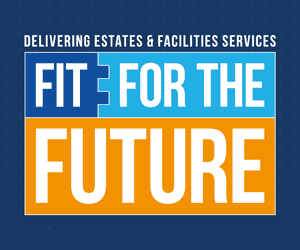In a report published earlier this week (October 25), the Public Accounts Committee (PAC) warns of wide regional variations in the quality of patients’ access to urgent and emergency care. The report says that not enough is being done to tackle delayed discharges, which means beds are unable to be released for new patients. It also points to risks around staffing, saying the uncosted long-term NHS workforce plan could lead to unsustainable financial pressures.
The PAC states that how quickly an ambulance will arrive depends too much on where a patient lives. The report finds that ambulance services covering large rural areas, for example in the South West and East of England, are particularly challenged and disproportionately affected by problems stemming from the flow of patients elsewhere in the system. Average ambulance response times for the most serious incidents varied from just under seven minutes in London to just over 10 minutes in the South West in 2021-22. Average 999 call response times ranged from 5.4 seconds in the West Midlands to 67.4 seconds in the South West.
The PAC’s inquiry also explored why delayed hospital discharges have increased. The number of patients staying in hospital despite no longer needing to be there averaged 13,623 across Q4 of 2022-23, up from 12,118 during the same period in 2021-22. The report highlights a number of reasons for this: problems discharging older patients from hospital into adult social care, and delays in hospitals’ own processes, transfers to NHS community settings, or with the provision of short-term care packages, or nursing or residential care. This last group can wait sometimes up to five weeks from when they are ready to leave hospital.
The NHS has not met targets for ambulance handovers since November 2017, and for A&E waits since July 2015. Given long-standing declines in performance, the PAC is not convinced NHS England (NHSE) has been sufficiently held to account for meeting targets and improving urgent and emergency care, an area in which the Government must improve.
There is a risk that future unsustainable financial pressures are built into the unfunded and uncosted NHS Long Term Workforce Plan, which only includes a commitment of an additional £2.4bn to cover training costs for the first five years of the 15-year plan. The report also highlights very high levels of staff ill health and turnover rates, with the PAC left unconvinced by NHSE’s approach to address workforce shortfalls. NHSE hopes to retain 130,000 staff who would otherwise leave over the next 15 years, an aspiration which seems highly doubtful given multiple dependencies on other factors and unknowns.
Dame Meg Hillier MP, Chair of the Committee, says: “Anyone who has had recent contact with the NHS knows it is in crisis. Patients suffering long waits and hard-pressed staff working in a system which is not delivering deserve better. The PAC’s role is to analyse the underlying numbers, and attempt to provide a Get Well Soon plan for the NHS.
“Excluding demand-led spending such as welfare payments, health takes up approximately 40% of day-to-day budgeted spending by Whitehall departments. It is vital this is delivering benefits for patients. The Government and health system need to be alert to the serious doubts our report lays out around the workforce crisis, both the approach to tackling it now and the additional costs of funding it in the future.”
Among the conclusions and recommendations of its report, the PAC points to a lack of any effective metrics to manage patient flows between different parts of the system, and that investment in technology and infrastructure improvements will be critical to improving productivity. However, the Department does not appear to have budgeted for any such investment and the PAC criticises NHSE’s existing plans saying they demonstrate a lack of ambition given the scale of the issue.
The PAC report also recommends NHSE should provide an update on the full cost of implementing its workforce plan over the next 15 years, including ongoing staff costs, training and recruitment costs, and the costs and underlying assumptions of necessary wider enablers such as technology and innovation, social care and infrastructure.










